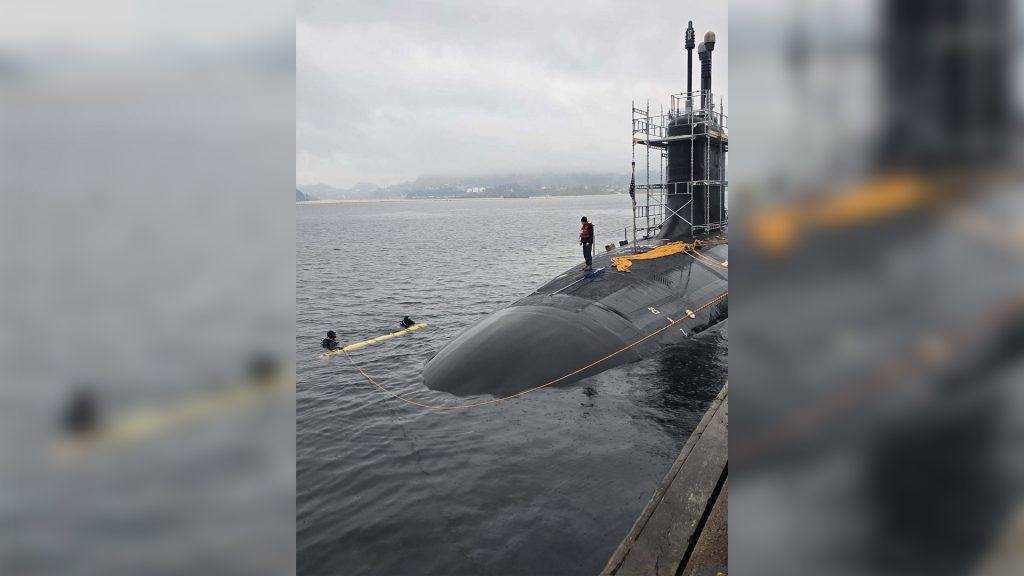US Navy makes history with unmanned underwater vehicle

In a stealthy, first-of-its-kind mission beneath European waters, the U.S. Navy successfully launched and recovered an unmanned underwater vehicle (UUV) from a submerged submarine, all without a single diver in the water. The operation, carried out by the Virginia-class fast-attack submarine USS Delaware (SSN 791), marked the first-ever forward-deployed torpedo tube launch and recovery of an autonomous UUV to complete a tactical objective.
Sailors used the Yellow Moray, a specialized version of the REMUS 600, in the history-making maneuvers. During a series of three sorties lasting up to 10 hours each, the Yellow Moray completed a preprogrammed tactical objective, setting a technological milestone in undersea warfare and showcasing the Navy’s growing commitment to robotic autonomy.
“Delaware is just the beginning,” said Vice Adm. Rob Gaucher, commander of Submarine Forces. “We plan to continue deploying submarines with robotic systems worldwide. This capability allows us to extend our reach with additional sensors at both shallower and deeper depths than a manned submarine can access.”
Tactical revolution, submerged
Until now, UUV operations typically required support vessels or diver involvement. Delaware’s mission rewrites the playbook. By using a standard torpedo tube, the submarine-launched and recovered the Yellow Moray repeatedly without surfacing or outside intervention. That capability opens doors for clandestine surveillance, seabed mapping, mine detection and missions in waters deemed too hazardous for manned submarines.
The system performs “the dull, dirty and dangerous jobs,” according to Gaucher. And it does so with incredible efficiency, all while keeping people out of harm’s way.
The autonomous drone’s successful deployment is being dubbed “a game-changer” for subsea and seabed warfare, a domain where control over underwater terrain can determine battlefield superiority.
Setback, recovery and triumph
The achievement comes just months after a rocky start in Norway’s icy fjords. In February, Delaware’s crew attempted a similar launch-and-recovery exercise, but the operation failed after multiple attempts. When the vehicle was recovered using a surface vessel, engineers discovered a damaged component.
Rather than letting the failure derail the broader mission, Submarine Force (SUBFOR) leaders shipped the UUV back to the U.S., replaced the faulty part and returned the vessel to its European area of operation. Delaware executed a diver-assisted pier side reload of the drone in Norway, another first, before going on to complete the historic mission.
Industry on the cutting edge
Defense contractor Huntington Ingalls Industries (HII), the builder of both the Delaware and the REMUS 600 system, played a central role in the operation.
Chris Kastner, HII president and CEO, said the fact the Navy used the REMUS for the first-ever forward-deployed torpedo tube launch was “a testament to the partnership” between the service and the maritime defense contractor. He also said it was proof of the value of “investing in innovation to meet the U.S. Navy’s needs.”
With an increasing focus on undersea dominance amid tensions with peer adversaries, the Navy’s ability to integrate autonomous systems into existing platforms, such as the Virginia-class submarines, is expected to accelerate.
A glimpse at the future
Delaware’s achievement signals more than a series of successful sorties. It represents a leap forward in how the Navy plans to fight, survey and survive in future maritime conflicts.
The nuclear-powered Virginia-class submarines are already among the most advanced in the world, built for missions ranging from strike warfare to intelligence gathering. The integration of autonomous systems like Yellow Moray will only deepen their capability, enabling commanders to survey and shape the battlefield from depths previously unreachable.





